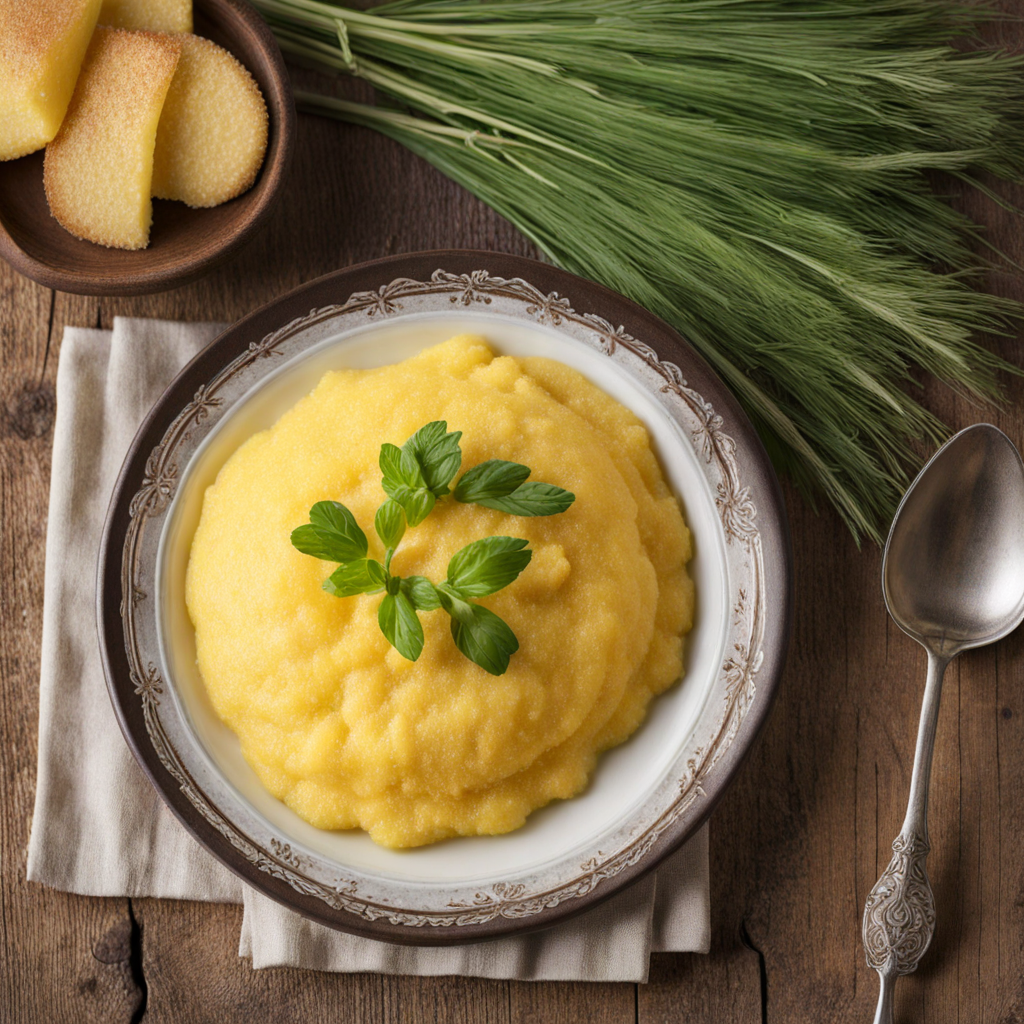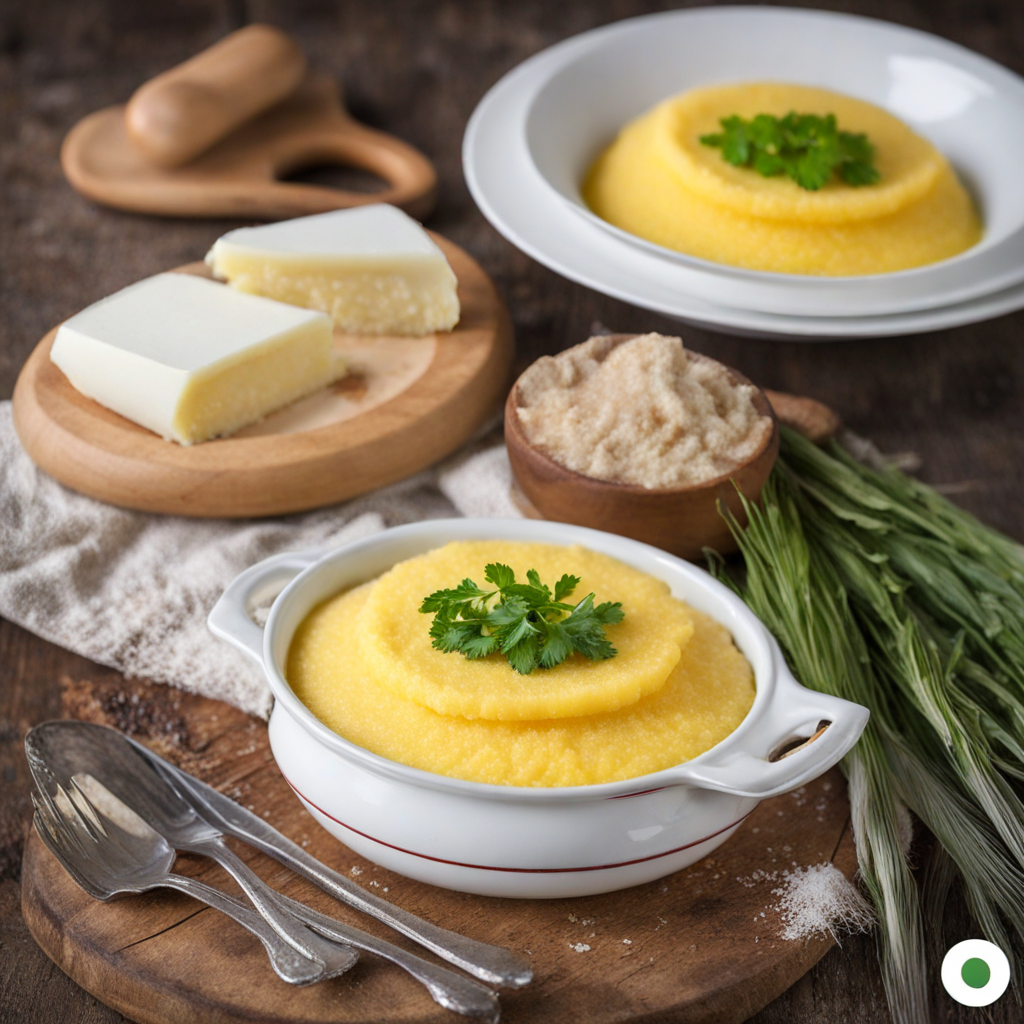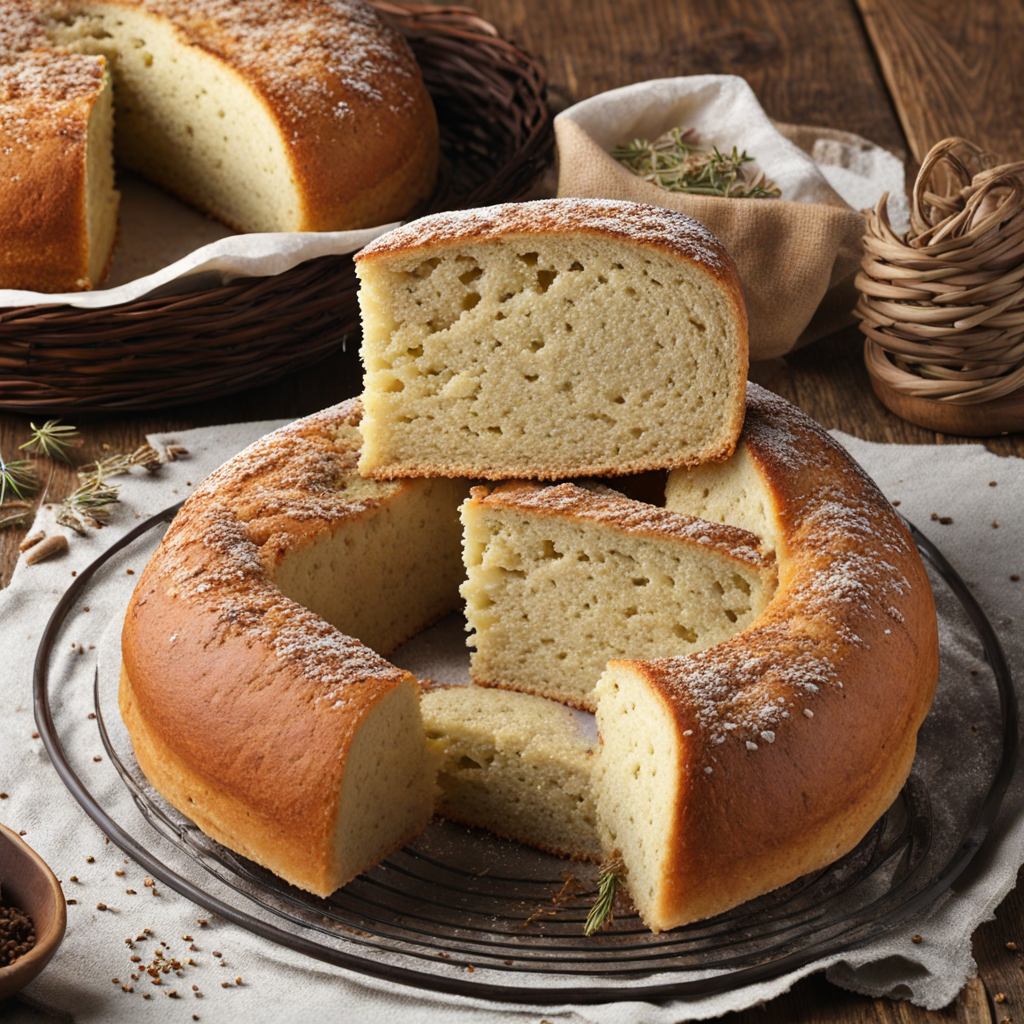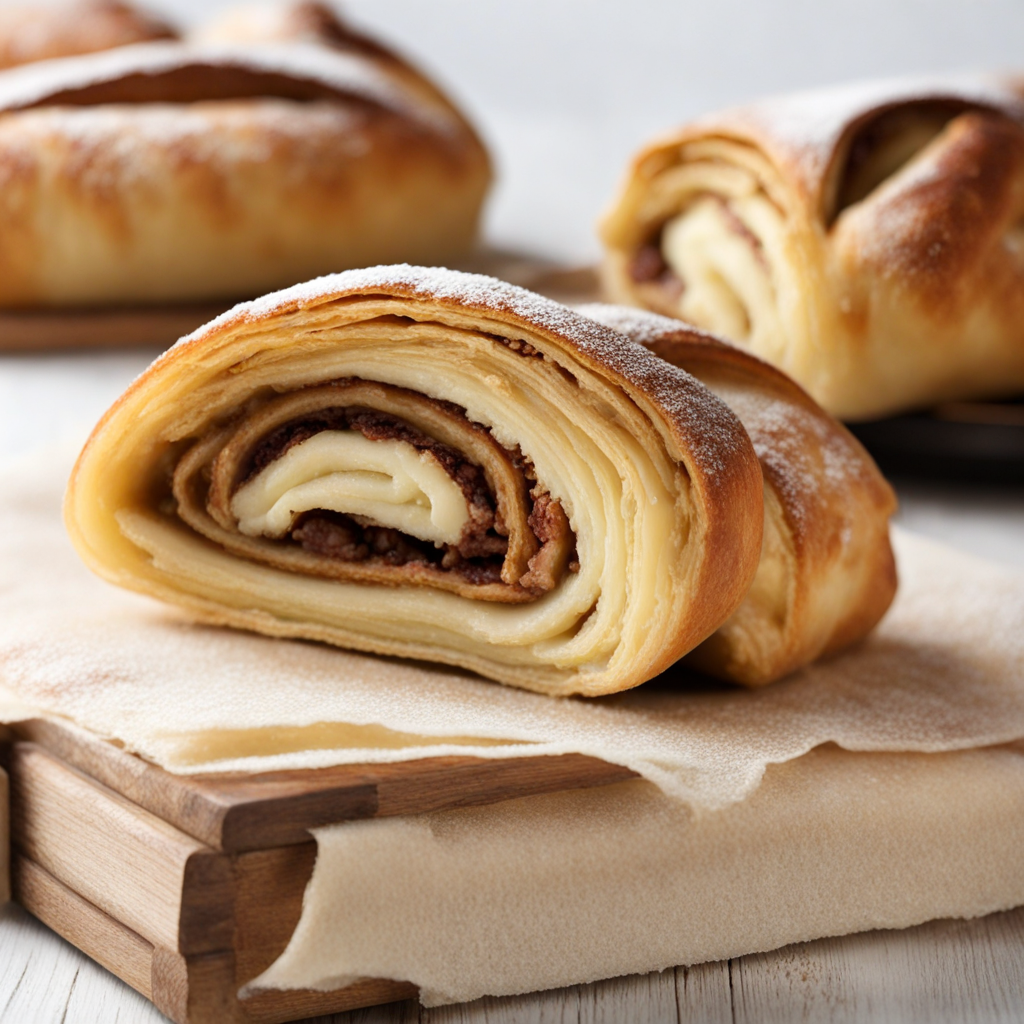Slovenian Polenta
Slovenian Polenta, known as 'koruza' in Slovenian, is a delightful dish made from ground cornmeal, showcasing the simplicity and heartiness of traditional Slovenian cuisine. This dish is characterized by its creamy texture and a subtly sweet, earthy flavor that comes from the high-quality corn used in its preparation. Typically, the cornmeal is cooked slowly in water or broth, stirring continuously until it thickens to a smooth consistency. The result is a warm, comforting base that can be enjoyed on its own or paired with a variety of toppings and accompaniments, making it a versatile staple in Slovenian households. What makes Slovenian Polenta particularly appealing is its adaptability. It can be served in a soft, porridge-like form, which is perfect for soaking up rich sauces or served as a firmer slice once cooled and set. This versatility allows it to complement both savory and sweet dishes. Traditionally, it may be enjoyed with a drizzle of olive oil, sprinkled with cheese, or topped with sautéed mushrooms and herbs, enhancing the overall flavor profile. Alternatively, it can also be served with fruit preserves or honey, offering a delightful contrast between sweet and savory elements. The cultural significance of Slovenian Polenta cannot be overlooked, as it has been a staple in the Slovenian diet for centuries. It is often associated with rustic, countryside meals and family gatherings, embodying the warmth of Slovenian hospitality. With its wholesome ingredients and comforting nature, Slovenian Polenta invites food enthusiasts to explore the rich agricultural heritage of Slovenia, promising a taste experience that is both unique and deeply rooted in tradition.
How It Became This Dish
An Engaging History of Slovenska Polenta #### Origins and Early Beginnings Slovenska polenta, a traditional dish deeply rooted in Slovenian culture, has its origins in the staple foods of Central and Eastern Europe. Derived from cornmeal, polenta is a dish that embodies the agricultural heritage of Slovenia, reflecting the country’s diverse landscapes and agricultural practices. The use of corn as a primary ingredient can be traced back to the late 17th century when it was introduced to Europe from the New World. Before the introduction of corn, the Slovenian diet relied heavily on grains such as barley, wheat, and millet. These grains were used to make various porridges and breads. The arrival of corn transformed Slovenian cuisine, particularly in the hilly and mountainous regions where corn thrived. This adaptability to local conditions made polenta a practical food for peasants and farmers, who could easily cultivate corn in their fields. #### Cultural Significance Polenta holds a special place in Slovenian culinary traditions. It is more than just a dish; it embodies the essence of Slovenian identity and the connection to the land. Traditionally, polenta was a staple food for the working class, often served with seasonal vegetables, meats, or dairy products. Its simplicity and versatility made it an ideal base for a variety of toppings, allowing families to make the most of what they had on hand. In Slovenian households, polenta was often prepared in large quantities, reflecting the communal aspect of cooking and eating. Families would gather around the table to enjoy this humble yet filling dish, fostering a sense of togetherness. The act of stirring polenta, often done with a wooden spoon, became a ritual, symbolizing the labor involved in preparing food and the care taken in nurturing family ties. #### Development Over Time As Slovenia underwent significant social and economic changes over the centuries, so too did the preparation and perception of polenta. During the Austro-Hungarian Empire, the influence of various culinary traditions brought new flavors and techniques to Slovenian kitchens. While polenta remained a staple, it began to incorporate ingredients from neighboring regions, such as cheese, herbs, and meats, leading to a richer culinary experience. In the 20th century, Slovenian cuisine faced challenges, particularly during the tumultuous periods of World War I and II, and later during Yugoslavia’s socialist regime. Food scarcity and rationing meant that traditional dishes had to be adapted, leading to variations in polenta recipes. Despite these hardships, polenta remained a beloved dish, often associated with comfort and home. The post-war era saw a resurgence of interest in local culinary traditions as Slovenia began to redefine its national identity. With the independence of Slovenia in 1991, there was a movement towards celebrating and preserving traditional foods, including polenta. Chefs and home cooks alike began to experiment with polenta, elevating the dish from its rustic roots to new culinary heights. #### Modern Interpretations Today, Slovenska polenta is enjoyed in various forms, from the classic creamy preparation to grilled or baked versions that are served as a side dish or a main meal. The advent of globalization and the farm-to-table movement has also influenced how polenta is perceived and prepared. Contemporary Slovenian chefs often use local, organic corn to create artisanal polenta, emphasizing the importance of quality ingredients and sustainability. In modern Slovenian cuisine, polenta is frequently paired with seasonal vegetables, wild mushrooms, or rich sauces, showcasing the country’s diverse agricultural bounty. Dishes such as “polenta with štruklji,” a type of dumpling filled with cottage cheese or herbs, have gained popularity, illustrating how traditional foods can evolve while maintaining their cultural significance. Furthermore, polenta has found its way into festive occasions and celebrations, highlighting its versatility. It is common to see polenta served at weddings, family gatherings, and national holidays, reinforcing its role as a symbol of Slovenian heritage and hospitality. #### Polenta in the Context of Slovenian Food Culture Slovenska polenta is not just a dish but a narrative that encapsulates the history, struggles, and triumphs of the Slovenian people. It embodies the principles of simplicity and resourcefulness, reflecting the agricultural roots that have shaped the nation’s food culture. The dish serves as a reminder of the resilience of Slovenian cuisine in the face of change and adversity. In recent years, there has been a growing interest in food tourism in Slovenia, with visitors seeking authentic culinary experiences. Polenta has become a focal point in this movement, with many food festivals and culinary events celebrating traditional dishes. Chefs are now incorporating polenta into gourmet menus, showcasing its versatility and ability to pair with international flavors. #### Conclusion Slovenska polenta is a testament to Slovenia’s rich culinary heritage, embodying the spirit of a nation that cherishes its traditions while embracing modernity. From its humble beginnings as a peasant food to its contemporary iterations in fine dining, polenta remains a beloved dish that connects generations. As Slovenia continues to evolve as a culinary destination, polenta will undoubtedly remain a staple on the tables of Slovenes and a point of fascination for food lovers around the world. The story of Slovenska polenta is one of resilience, community, and the enduring power of food to bring people together, making it an integral part of Slovenia’s cultural fabric.
You may like
Discover local flavors from Slovenia






